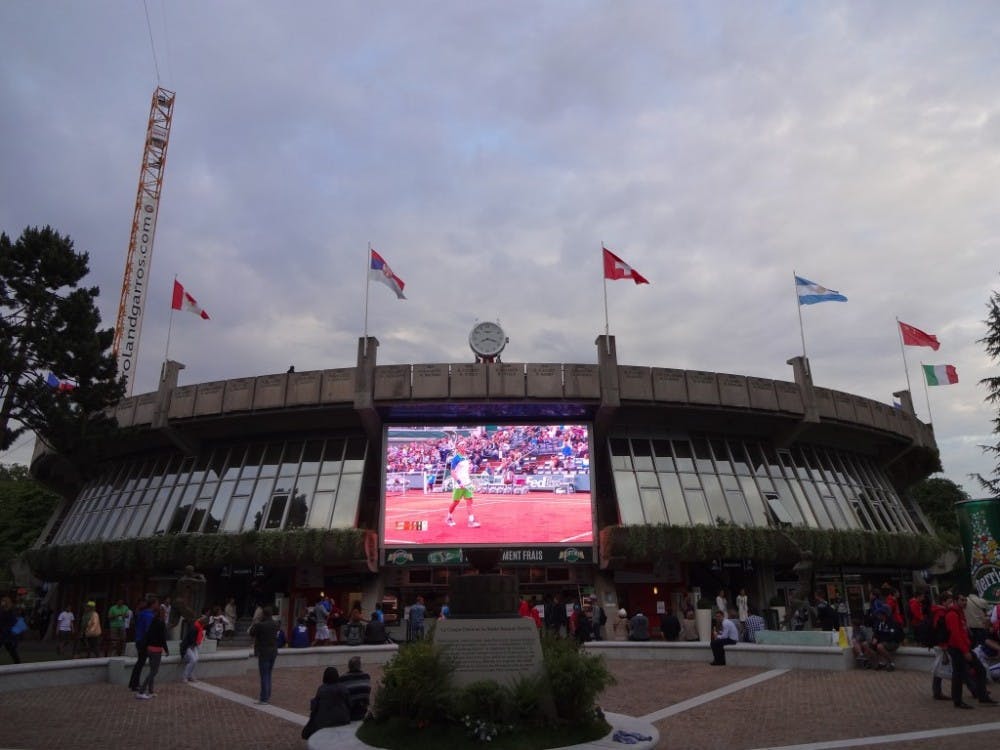Every year in the middle of May, the tennis world focuses on the Parisian suburb of Porte d’Auteuil, the site of the French Open. As one of each year’s four Grand Slams, the French Open, better known locally as Roland Garros, attracts the very best talent from across the globe, along with a healthy number of A-list celebrities and tons of eager, wide-eyed tourists.
The French Open was first held in its current location in 1928, and today the French Open is incorporated into the Grand Slam circuit along with the Australian Open, Wimbledon and the US Open, comprising the four most important tournaments of the year. Over the years, the French Open has been somewhat of an outlier among the other three Grand Slams. The Australian Open in January features hard courts and searing heat as a hot kickoff to the tennis season, while stately Wimbledon in June showcases soft, delicately manicured grass courts and pristine manners. Finally, the US Open in September is an apropos bookend to the Grand Slam season with more super-fast hard courts and a posse of New York bigwigs in attendance along with the typical American enthusiasm for sporting events. But the French Open consists of slow clay courts that force players to use tactics different from those on hard or grass courts while being accompanied by distinctive, unsympathetic, partisan French fans where if a player ticks off the crowd, he or she will dearly regret it.
Roland Garros also has a distinct atmosphere, one that has drawn French banker Evelyn Hurel to the venerable red clay each of the past seven years.
“I like the ambiance and the accessibility of the courts. Roland Garros is kind of like its own village – it’s just a big family.”
While Hurel also enjoys the contrast between the grandeur of the main courts and the intimacy of the outer courts at Roland Garros, other fans had different reasons for attending.
French IT executive Karine Merceron came for the first time this year. She said she had not gone before because, if it rains, the courts become dangerous and play is suspended until the courts are dry, sometimes resulting in delays of many hours or even a whole day. Since refunds are not issued for weather problems, she thought the risk was too high of buying a pricy ticket during a rainy month in France and then not getting to watch any tennis. But this year she tried her luck and came for her friend’s birthday, immediately noticing the business side of the tournament.
“There is a lot of marketing; it’s kind of like Times Square,” Merceron said.
Despite that, she had a good time and was pleasantly surprised about the accessibility of the matches.
“We could go to the other courts and see them [the players] very close. We even managed to get an autograph from [Spaniard and top-ranked Rafael] Nadal.”
Nadal is still the clear favorite in this, his favorite tournament. Nadal is the undisputed “King of Clay” and the most dominant player in French Open history, with a 59-1 win-loss record and an incredible eight French Open titles. His usual nemesis, Serb Novak Djokovic or another player like Spaniard David Ferrer might be able to break Nadal’s incredible reign, but without an injury, one should not bet on it. On the women’s side, as usual, the favorite is anybody’s guess. The defending champion, American Serena Williams, has been hampered by injuries, and clay does not suit her game well. Other contenders include Pole Agnieszka Radwanska, a consistent player but without a powerful game, and Belarussian Victoria Azarenka.
Seeing so many stars at once is a dream come true for tennis fans, particularly Roberto Guercini. He’s a native Italian who’s living in Milwaukee but is working in Paris for half a year at a local university, finding housing for American students in the difficult Parisian real estate market. He was absolutely thrilled to be able to see the French Open.
“It’s my favorite Grand Slam. It’s in Paris, and it’s on clay. I play tennis, and clay is my favorite surface,” Guercini said.
At the end of a long day, with the sun setting over the beautiful history-laden grounds of Roland Garros, Guercini smiled and offered some words of advice about Roland Garros to his fellow brothers and sisters—not just for those who are tennis fans, but for everyone.
“Once in a lifetime, they should put it on their bucket list and come to Paris. For the history, for the importance. All the best players are here.”


